Personal Impressions
Written by Sophie Kent - Administrator

As our coach driver slowly makes his way down the narrow streets of Löbau, I wait with anticipation to see the front doors of the August Förster piano factory a second time. We are here to tour one of the oldest established piano factories in the world, and from the outside, it is indistinguishable from the traditional Saxon buildings that make up the rest of the town.
This is the first occasion that Peregrine’s Pianos has invited guests to join us on a visit to August Förster Pianos, and we bring with us a party of people from all walks of life and regions across the United Kingdom. This includes five people that already have an August Förster instrument in their home, one of whom is a piano teacher who has been a proud owner for forty years. I am excited to hear how the tour of the factory enhances our guests’ appreciation of these pianos, and to learn something of the impression left on anyone who has joined us.
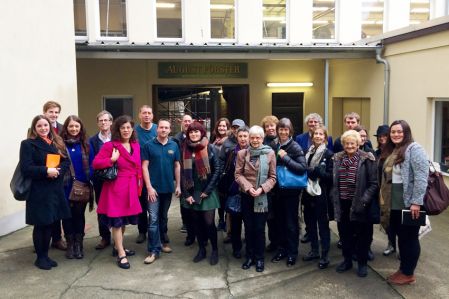
The trip spans two days, the first dedicated to a tour of Baroque Dresden, a city which plays a big part in the history and development of the piano. We were privileged to be invited to the August Förster Villa, and to meet Annekatrin Förster, Director of August Förster Pianos and the fifth generation of her family. We were treated to a traditional Saxon dinner and I took the opportunity to get to know a little more about our guests, and the reasons behind their interest in these pianos.
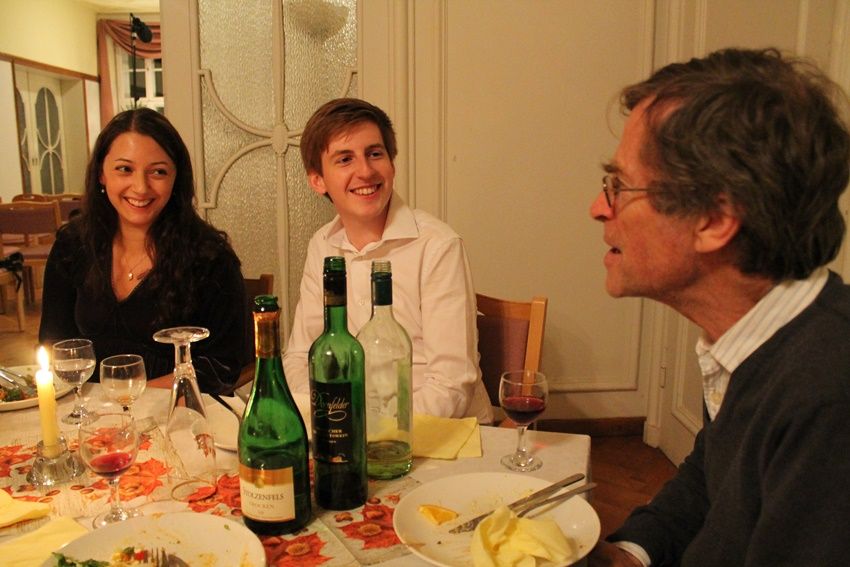
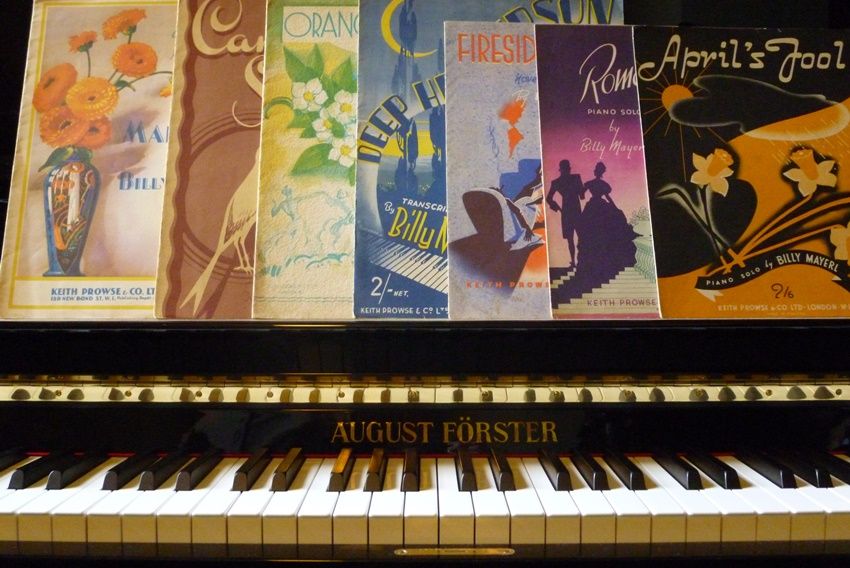
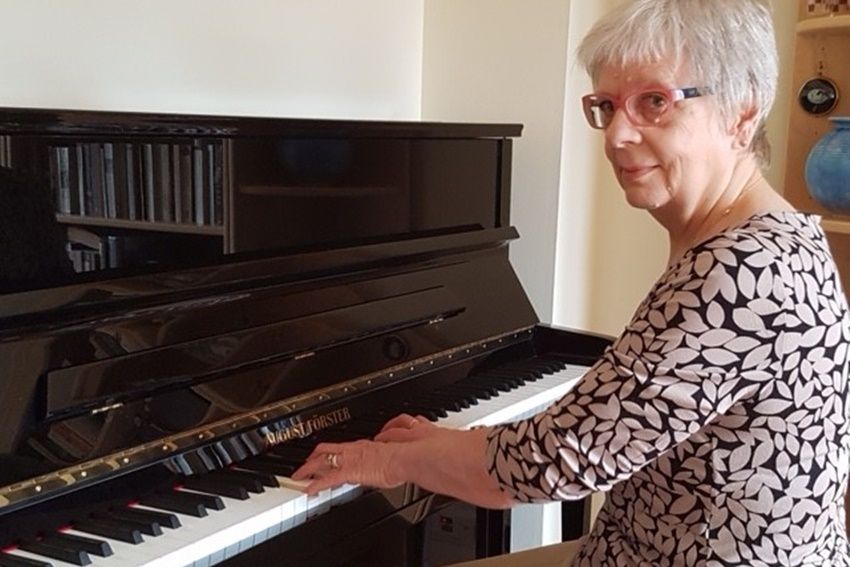
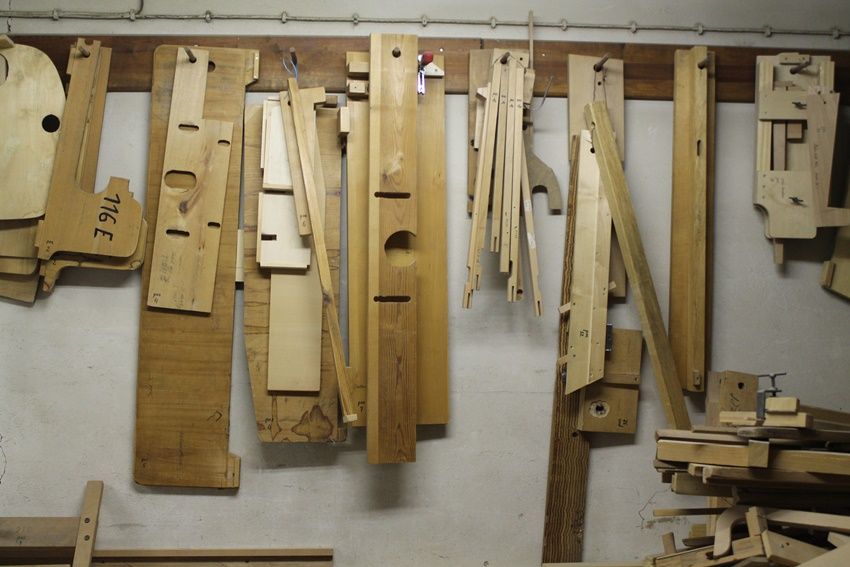
I speak to Daniel, an airline pilot in his twenties whose piano we delivered to the very furthest reaches of Wales. When he is not flying aeroplanes, and staying in hotels, he savours the rare opportunities at home to play a variety of 1930s piano music on his upright August Förster model 125G (pictured). I can see that I am going to hear of the enormous capabilities of these pianos, and it is a real pleasure to speak to another happy customer.
After a comfortable night’s sleep in the Honigbrunnen Hotel which overlooks the town, we make an early start to gain the full experience of the factory before lunch. I have a chat with Gillian, who has come armed with the serial numbers of two August Förster pianos in her family, one of which is a mahogany upright that she has been teaching on for forty years. Despite this, she tells me how well the piano stays in tune, and that she is looking forward to learning how the construction methods have made her piano so reliable for her teaching.
We start off in the sleeping room, where all our guests are astounded to learn that as many as twenty different types of wood make up one piano. Customers ask, “What kind of wood? Where does it come from? How long does it rest for? At what temperature?” … the list goes on, and I can see that from the very start of the tour, our guests are fascinated by the processes in this magical factory.
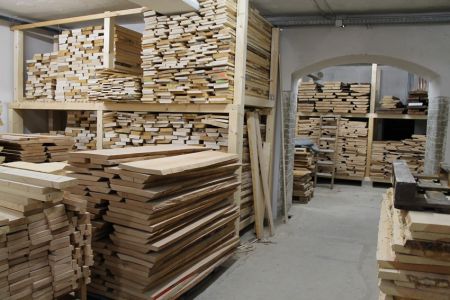
I talk to Anne (pictured), who we first met a few years ago, as she was taking her Trinity College London exams in our rehearsal studios. She is now storming through her piano grades, and will soon be taking her Grade 7. Anne bought an August Förster piano from us recently, and was keen to see how her upright model 116E had been produced.
As we witness how the wood is cut and used to build each piano, we spot the template used to construct the leg of a 116E (pictured), and it seems to really have an impact on Anne to realise the enormous number of components that make up her piano. Moving through the factory, we witness how the different parts are meticulously put together. Anne tells me, “Every room we enter, every process I see, makes me love my piano more and more!”
I catch up with Miranda, who has been thinking about buying a new piano for a while: “I realised I needed a new piano after playing modern pianos in rehearsal studios. There is so much to see here, so many stages of construction!” Miranda’s situation is one with which we are very familiar, when one knows that they need to upgrade their piano, but after playing and loving the same instrument for many years, it is difficult to imagine owning something new. In the end it is the lightness of touch and responsiveness of these instruments that appeals, and Miranda knows that the August Förster grand piano model 170 in rosewood will be her piano.
Miranda’s friend Sue is a piano teacher who is also thinking of upgrading her piano to an August Förster. For her, the fact the company is a small, family-owned business is important. Sue tells me that every step of the tour has been fascinating; the expertise of the workers and the care and attention to detail has really inspired her to think about buying one of these pianos.
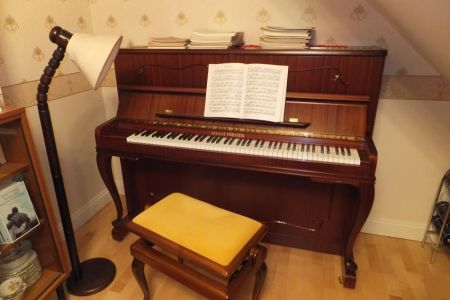
One of the most positive things about our factory visits is bringing people that are looking for a new instrument together with those that already own an August Förster piano. Clare’s piano (pictured) is called the Chippendale: she is very fond of the beautiful mahogany satin finish, the cabriole legs and carved detail. As we climb to the upper floors of the factory, Clare tells me, “The visit has made me want to play my piano even more, and I can’t wait to get home and appreciate it further!”
As we near the finishing room, where guests will have the opportunity to play the full range of August Förster pianos, I enjoy an exchange with Avalon, whose father is a guitar-maker: “Throughout my life, I have seen the different components of guitars being made and put together, and it has been wonderful for me to see such craftsmanship while walking through a piano factory.”
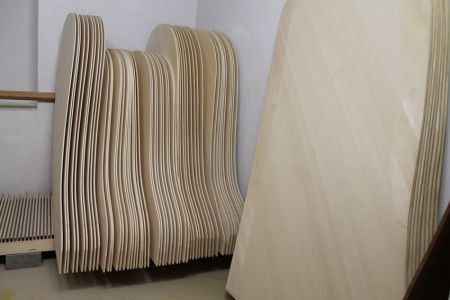
Jennifer is similarly inspired by what she has seen, although she tells me, “How sad it is that the soundboard (pictured), which is crafted so beautifully, is hidden once the piano is constructed.” I tell her that when you hear the tone of these pianos, the beauty of the soundboard is very evident! Jennifer currently has a keyboard at home, but after witnessing every process behind the creation of one of these acoustic pianos, she has been given the impetus to pick up the piano again. This is exactly what we strive for in organising one of these trips.
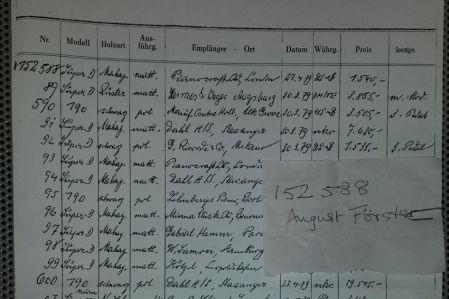
Finally, one of my favourite moments of our visit is when Stephanie, niece of Annekatrin Förster, arrives in the finishing room with photocopies of the factory logbook from the 1970s. Gillian, the piano teacher who has owned her piano for many years, has supplied the serial numbers of the two August Förster uprights which are still in her family today. She is allowed to take away copies of the logbook (pictured), showing the full details, including when the pianos were sent to London for her to purchase them.
During the course of the trip, I witness owners of August Förster pianos finding a new understanding, whilst people who are hoping to bring one of these instruments into their home learn the unique qualities of an August Förster piano, so that every guest is left with a lasting impression.